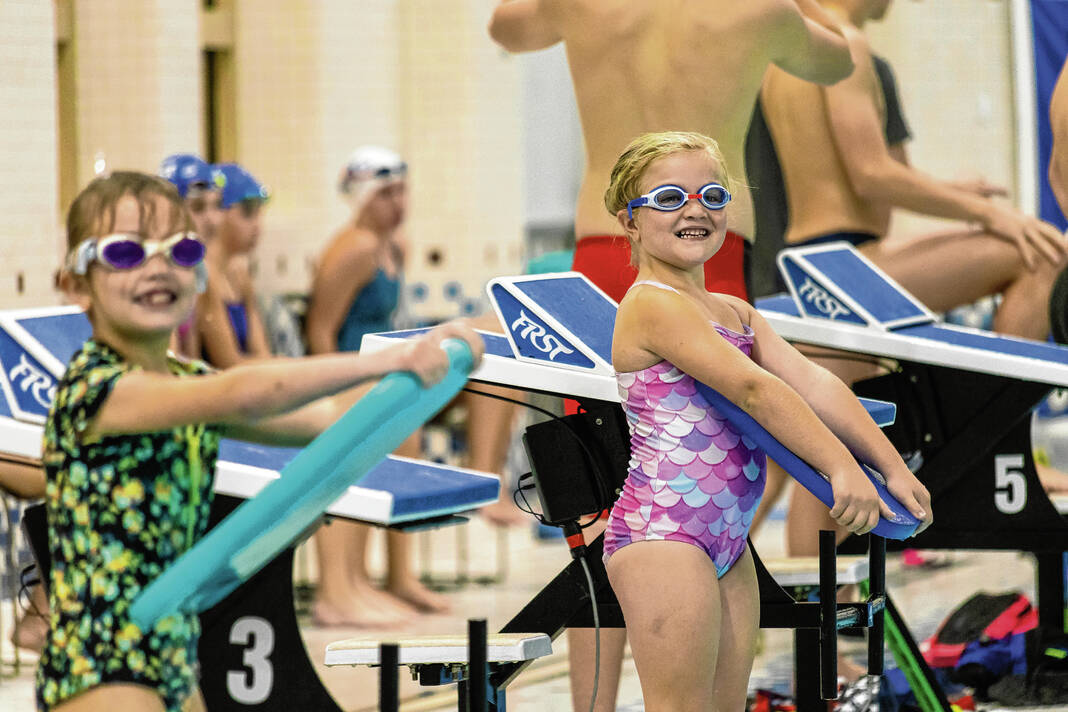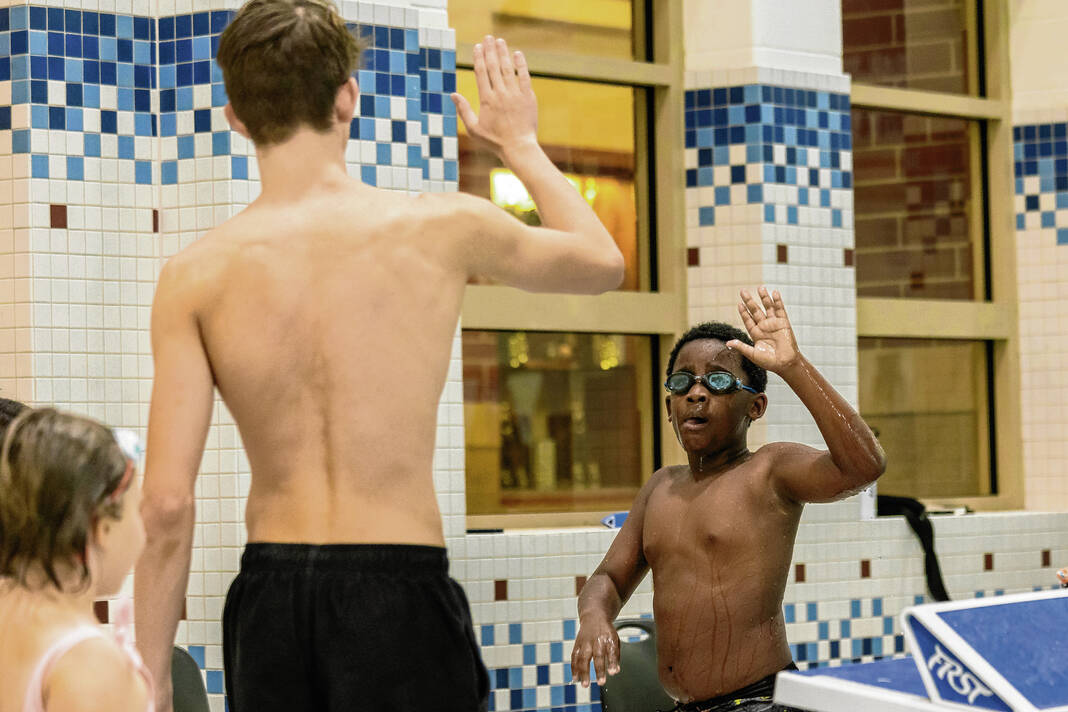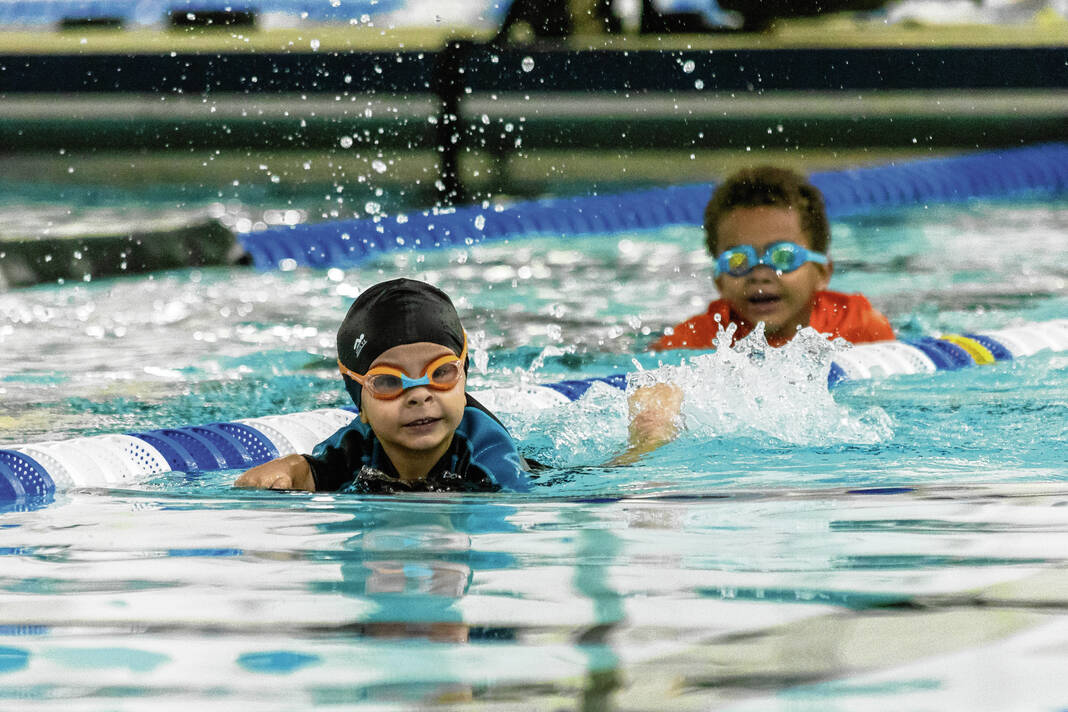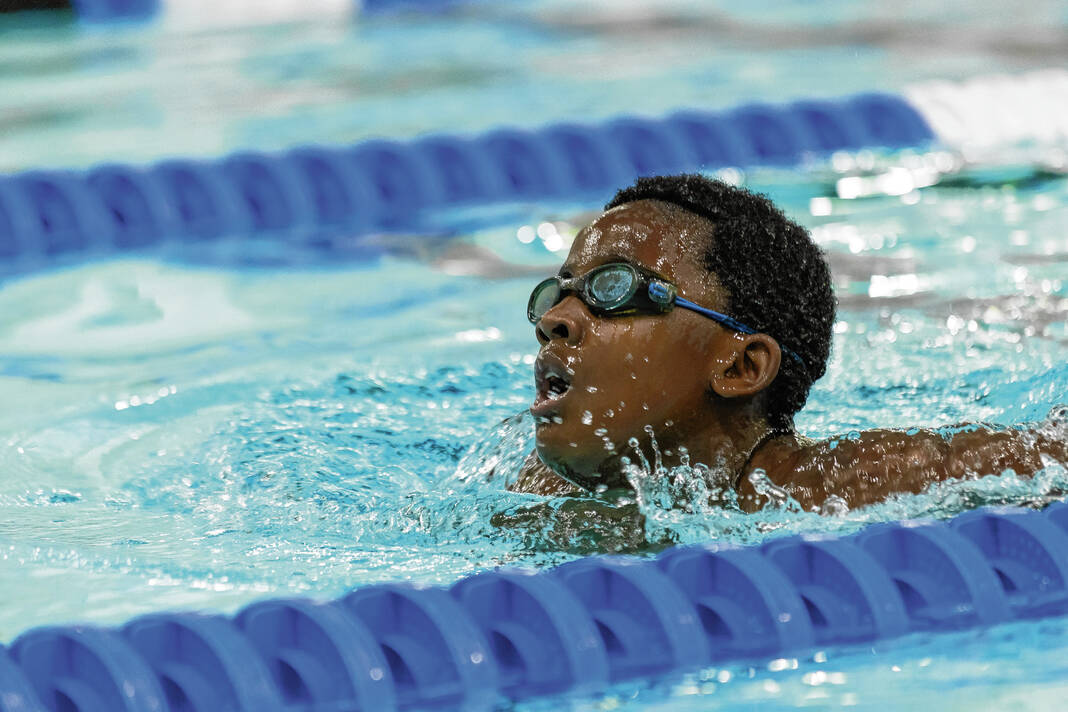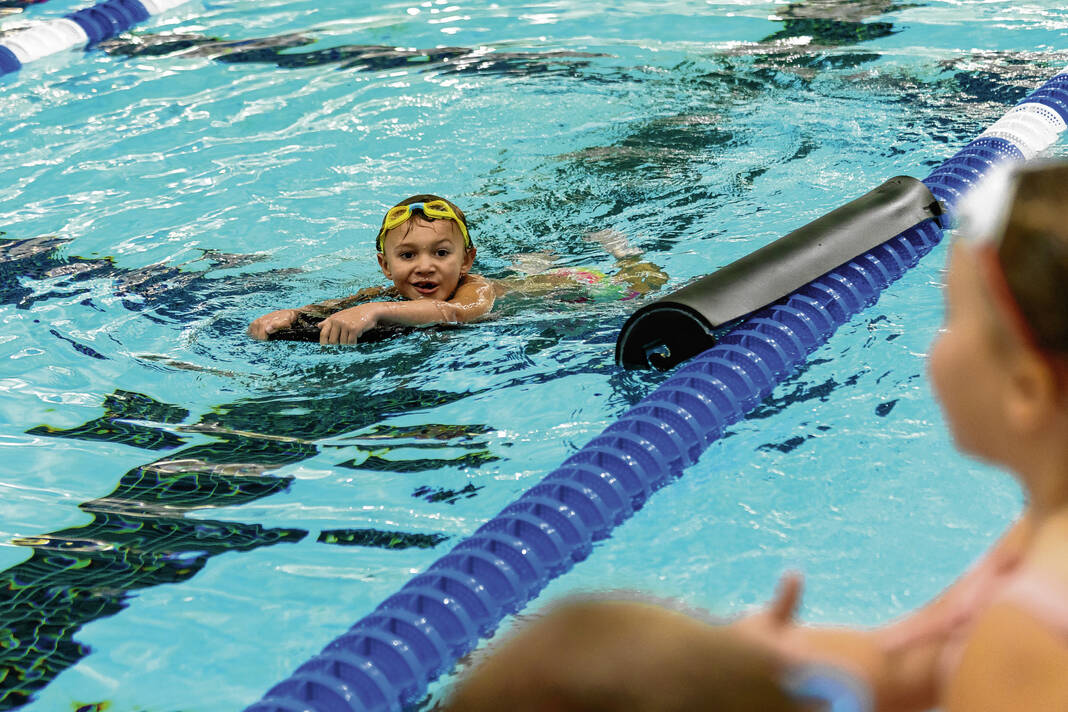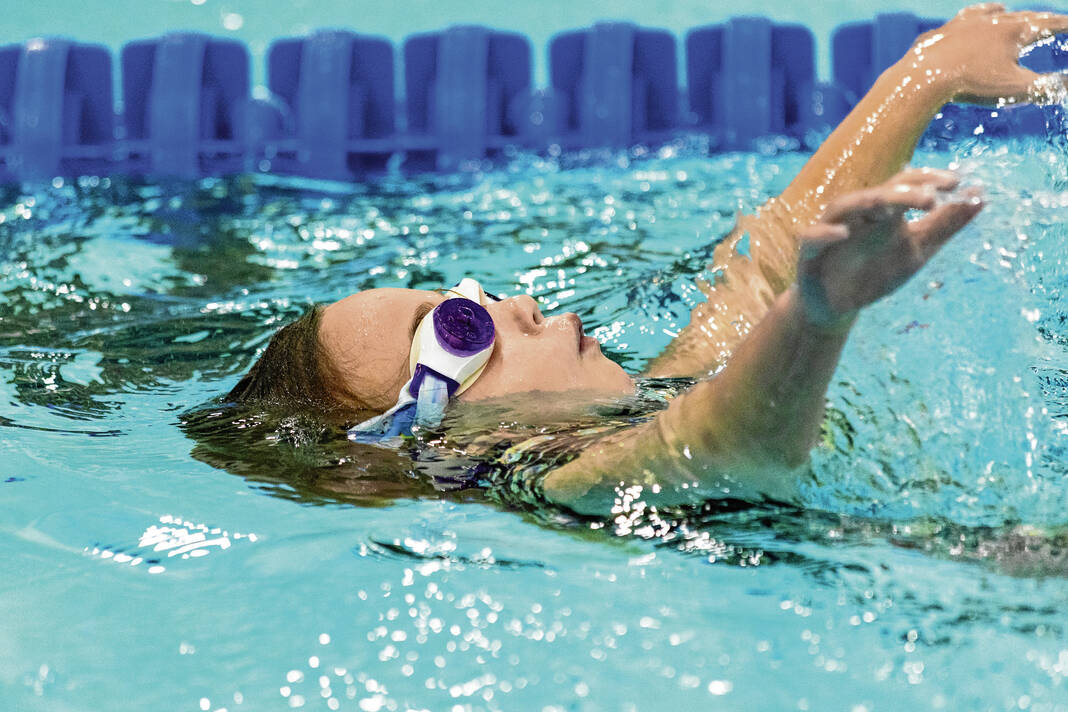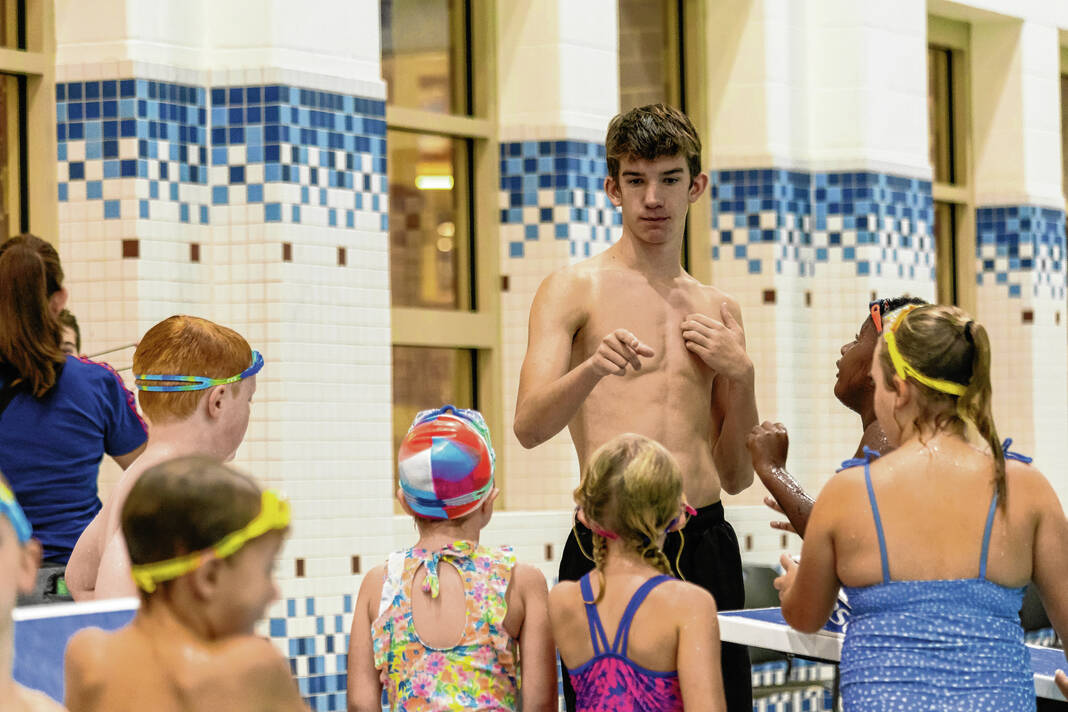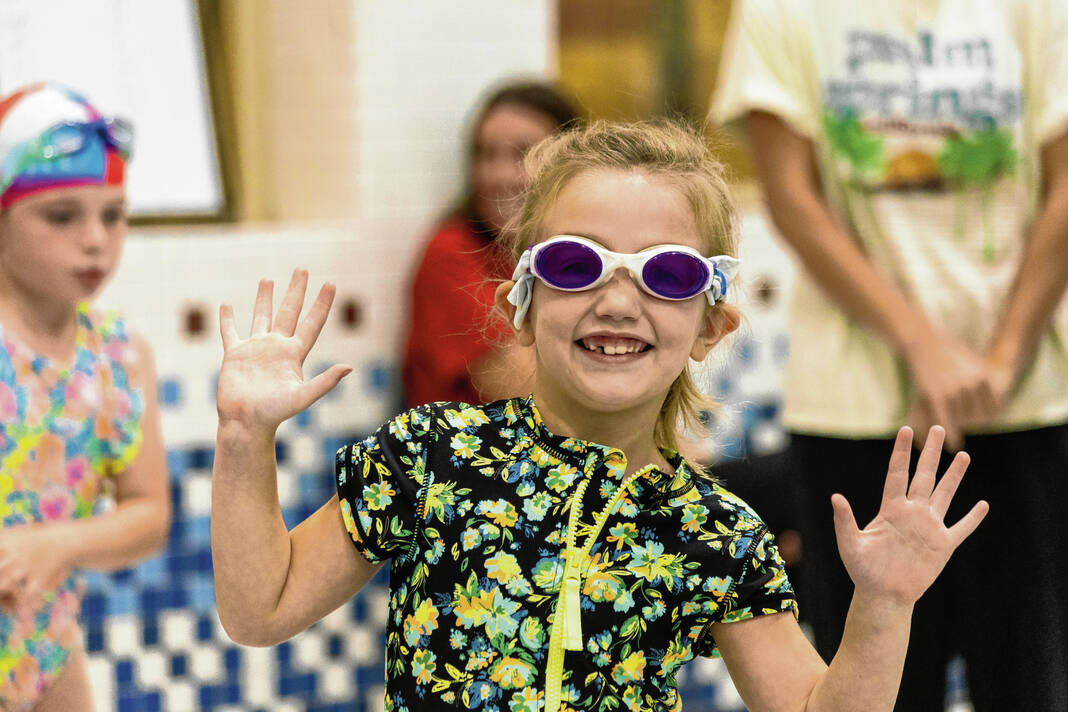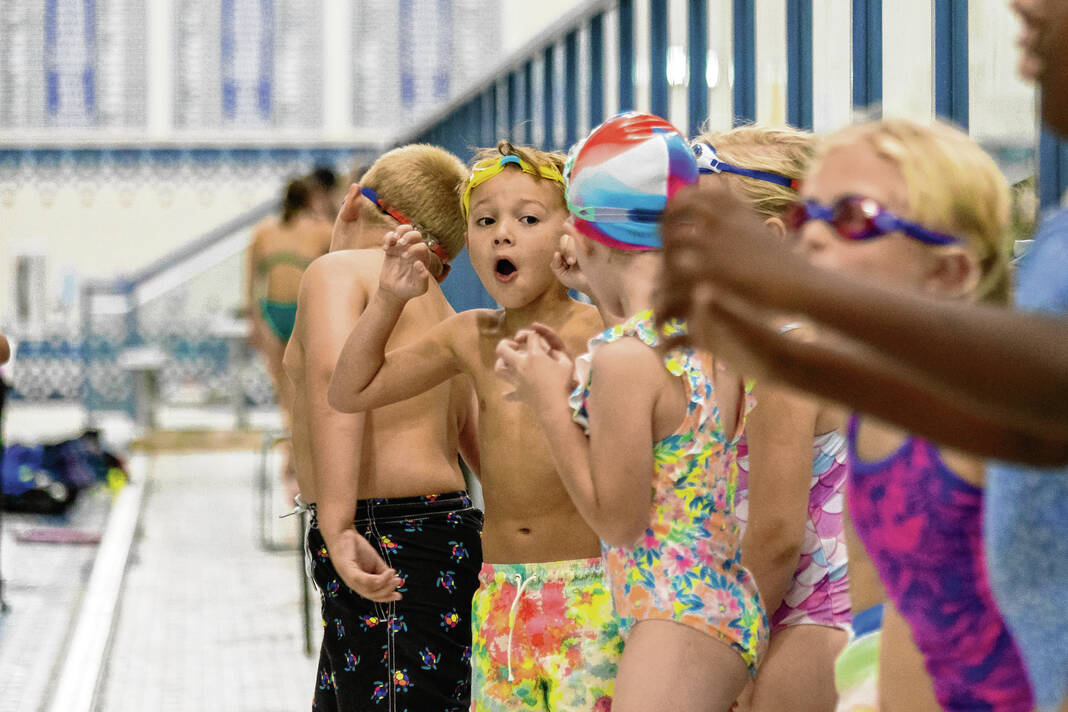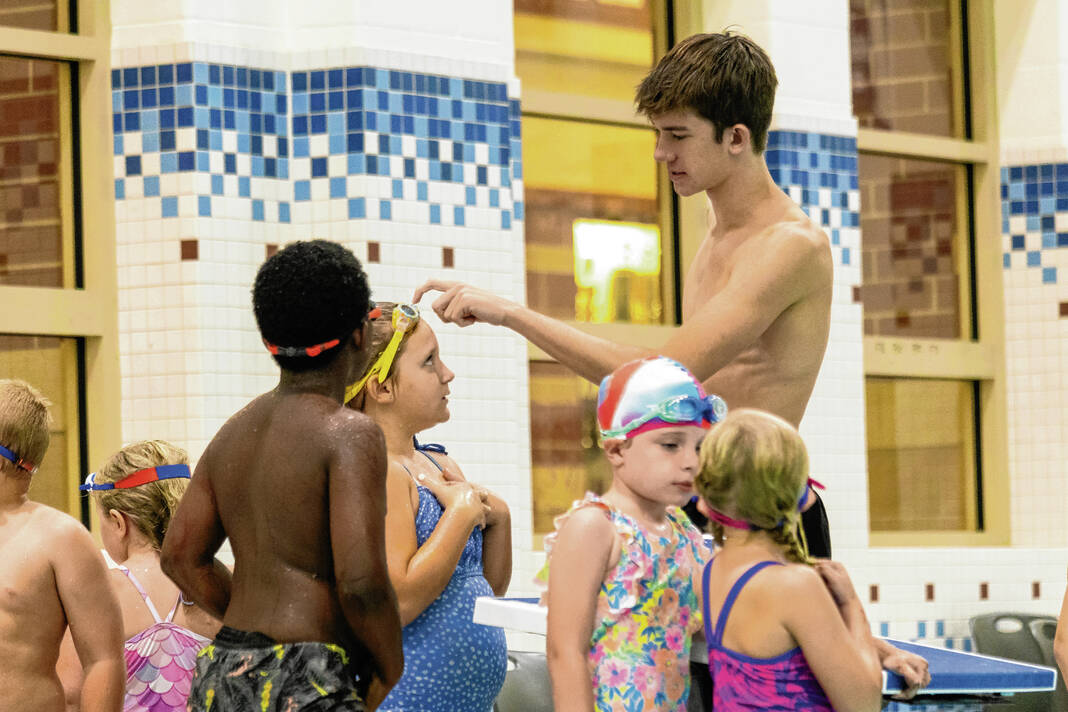The world of club swimming can be pretty overwhelming, especially for newcomers to the sport.
Both the Franklin Regional Swim Team and the Center Grove Aquatic Club have tried to make it a bit less intimidating to wade into by setting up in-house programs that serve as somewhat of a bridge between swim lessons and full-blown club involvement.
The strokes might not all be technically legal at these introductory meets, and there might be the occasional early relay takeoff — sometimes leading to head-on collisions between teammates — but there will be plenty of time down the line for critiques or disqualifications. For now, the main objective is to make sure that the first competitive swim experience is an enjoyable one; if the smiles-to-tears ratio on Franklin’s pool deck in recent weeks has been any indication, that mission has been accomplished.
The Franklin Swim League just concluded its third season this week; the five-week program brings 10-and-under swimmers together for practices on Mondays and low-stress mini-meets on Wednesdays. At Center Grove, the Discovery program runs for eight weeks, with 16 practices leading up to a season-ending meet.
Both are low-commitment ways for young swimmers and their families to decide if they want to pursue the sport more seriously after getting past the lessons program.
“Once you get to that final stage, sometimes it’s really hard to just jump straight into competing, because meets are very confusing,” said FRST assistant coach Quin Bailey, who ran the Franklin Swim League this fall after the initial two seasons were piloted by colleague Griffin Edwards. “So this is kind of on a small scale within our own club, you know, what it’s going to look like a little bit — for the parents as well as swimmers.”
Bailey has gotten help this fall from a pair of Grizzly Cub varsity swimmers, seniors David Barnett and Reagan Graves, who have helped coach the youngsters through what is the first competitive swimming experience for many of them.
Barnett says he wants to make sure that everyone’s having fun so that they’ll be more likely to stick with the sport as they grow up; he wishes he’d had a similar opportunity in his earlier years.
“I didn’t start swimming at a young age like these kids,” Barnett said. “I think if I’d started younger I could be better, possibly … so I want to give my time back to kids to help them be better.”
At Center Grove, Discovery is broken up into two divisions by age — Black for swimmers ages 9 to 13 and Red for the younger beginners. Red swimmers are expected to be able to swim 25 yards of both freestyle and backstroke (the same requirements as in Franklin), while Black swimmers need to be able to complete 75 yards of each stroke.
In both groups, the focus is on laying a solid foundation in all four strokes.
“It provides somebody the option to get acquainted with it,” said Kaitlin Smith, who oversees the Discovery programs for CGAC.
Numbers have been strong; Smith says that Center Grove typically has between 50 and 70 swimmers in Discovery for each of the three yearly sessions (starting in January, June and September); Franklin Swim League generally has between 20 and 30 young swimmers for its summer and fall seasons.
Meets can get a little crazy when dealing with swimmers who’ve never competed before; it’s in those situations when Bailey’s experience as a kindergarten teacher at Union Elementary School gets put to good use.
“There’s definitely some classroom management techniques being used at practice and at swim meets,” Bailey said, “and also just being that support for them and that encouragement. You really have to understand kids a little bit to really know how to get them to want to do things on their own, and not just push them into a pool and say, ‘Here’s what we’re doing.’ Letting them figure out that they love swimming on their own.”
By and large, that approach has worked — both Center Grove and Franklin have seen a decent amount of swimmers take the leap into club swimming after testing out the in-house programs.
Conducting league affairs while club practices are going on in adjacent lanes helps somewhat, Bailey says.
“It also kind of allows parents to see the next steps,” she said, “because they come in and I’m finishing up my first (club) practice, so they see that this what’s next if my kid wants to continue, and that this is something that they can stay in for a really long time. It doesn’t have to just be these five weeks when they’re 7 years old.”
Maybe it does end up just being those five or eight weeks. Maybe some end up falling in love with swimming and make a complete commitment to it. Either way, the Franklin Swim League and CGAC’s Discovery provide an avenue for families to figure that out without having to sacrifice five or six nights a week right from the jump.
The deep end seems far less daunting once you’ve had a chance to master the shallow end first.


